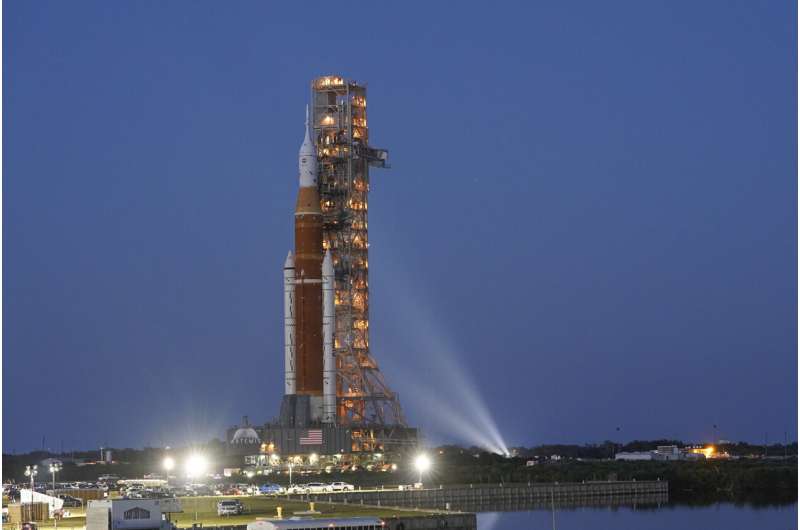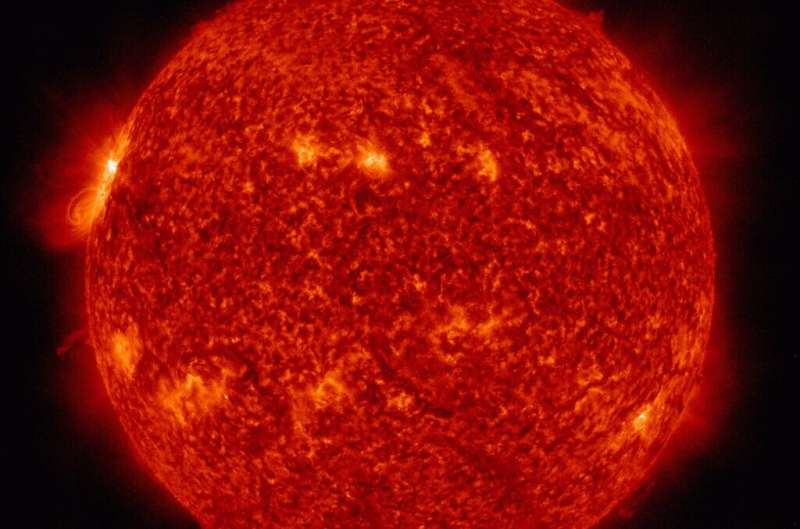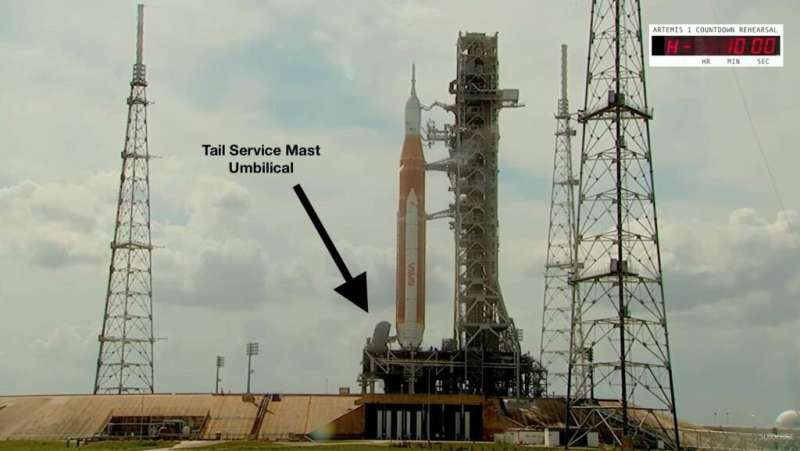
Copernical Team
SpaceX launches second U.S. reconnaissance satellite on Falcon 9 rocket
 SpaceX on Sunday successfully launched a U.S. spy satellite for the National Reconnaissance Office on its Falcon 9 rocket.
The company announced liftoff in the launch from the Vandenberg Space Force Base in California at 9:14 a.m.
The Falcon 9 carried the NROL-85 satellite that is used to collect and deliver "space-based intelligence, surveillance and reconnaissance," the office
SpaceX on Sunday successfully launched a U.S. spy satellite for the National Reconnaissance Office on its Falcon 9 rocket.
The company announced liftoff in the launch from the Vandenberg Space Force Base in California at 9:14 a.m.
The Falcon 9 carried the NROL-85 satellite that is used to collect and deliver "space-based intelligence, surveillance and reconnaissance," the office Planet releases slew of datasets for planetary variables
 Planet Labs PBC has announced the release of Planetary Variables, a new product offering consisting of three pre-processed, accurate data feeds that measure the conditions of dynamic systems on the surface of the Earth. The three Planetary Variables feeds consist of Soil Water Content, Land Surface Temperature, and Vegetation Biomass Proxy to help customers make informed decisions in industries
Planet Labs PBC has announced the release of Planetary Variables, a new product offering consisting of three pre-processed, accurate data feeds that measure the conditions of dynamic systems on the surface of the Earth. The three Planetary Variables feeds consist of Soil Water Content, Land Surface Temperature, and Vegetation Biomass Proxy to help customers make informed decisions in industries Core module of China's space station achieves anticipated goal
 Tianhe, the core module of China's space station, has completed its verification of key technologies and achieved its expected goal.
Yang Hong, chief designer of the space station system of the China Manned Space Program at the China Academy of Space Technology, made the remarks at a press conference in Beijing on Sunday.
Yang said the core module has been in orbit for almost one y
Tianhe, the core module of China's space station, has completed its verification of key technologies and achieved its expected goal.
Yang Hong, chief designer of the space station system of the China Manned Space Program at the China Academy of Space Technology, made the remarks at a press conference in Beijing on Sunday.
Yang said the core module has been in orbit for almost one y China reveals missions of Shenzhou-14, Shenzhou-15 space crews
 The crews of China's Shenzhou-14 and Shenzhou-15 missions have been selected, and are carrying out relevant training and mission preparations, according to a press conference on Sunday.
Both crews will stay in orbit for six months, and they will for the first time rotate in orbit to realize the uninterrupted manned residence, Huang Weifen, chief designer of the China manned space program's
The crews of China's Shenzhou-14 and Shenzhou-15 missions have been selected, and are carrying out relevant training and mission preparations, according to a press conference on Sunday.
Both crews will stay in orbit for six months, and they will for the first time rotate in orbit to realize the uninterrupted manned residence, Huang Weifen, chief designer of the China manned space program's Shenzhou XIII mission a success in testing tech for space station
 The Shenzhou XIII mission has concluded the technology demonstration phase in the construction of China's Tiangong space station, according to a senior space official.
Hao Chun, head of the China Manned Space Agency, told a news conference in Beijing on Sunday that the phase, which included the deployment of Tiangong's core module and two manned spaceflights, has laid a solid foundation fo
The Shenzhou XIII mission has concluded the technology demonstration phase in the construction of China's Tiangong space station, according to a senior space official.
Hao Chun, head of the China Manned Space Agency, told a news conference in Beijing on Sunday that the phase, which included the deployment of Tiangong's core module and two manned spaceflights, has laid a solid foundation fo Russian cosmonauts activate robotic arm on ISS during spacewalk
 Two Russian cosmonauts aboard the International Space Station on Monday completed the first of two spacewalks to activate the station's new European Robotic Arm.
Cosmonauts Oleg Artemyev and Denis Matveev left the Russian Nauka module at 11:00 a.m. EDT to install the automated arm's control panel, finishing up their work and returning to the ISS around 5:48 p.m. EDT.
NASA's websi
Two Russian cosmonauts aboard the International Space Station on Monday completed the first of two spacewalks to activate the station's new European Robotic Arm.
Cosmonauts Oleg Artemyev and Denis Matveev left the Russian Nauka module at 11:00 a.m. EDT to install the automated arm's control panel, finishing up their work and returning to the ISS around 5:48 p.m. EDT.
NASA's websi Safe ISS operation should remain priority, Space Foundation says
 All countries participating in the International Space Station (ISS) project should focus on maintaining its safety and continued work, and keep in mind the long history of cooperation, as Russia is reviewing the future of its participation after sanctions, Space Foundation CEO Tom Zelibor told Sputnik.
In March, Roscosmos Director General Dmitry Rogozin said the Russian space agency will
All countries participating in the International Space Station (ISS) project should focus on maintaining its safety and continued work, and keep in mind the long history of cooperation, as Russia is reviewing the future of its participation after sanctions, Space Foundation CEO Tom Zelibor told Sputnik.
In March, Roscosmos Director General Dmitry Rogozin said the Russian space agency will NASA moon rocket faces more flight delays as repairs mount

Sun releases significant solar flare

The Sun emitted a significant solar flare on April 16, 2022, peaking at 11:34 p.m.
NASA is having a tough time testing the SLS

NASA's Space Launch System (SLS) has been having some problems getting tested since it rolled out onto launch pad 39B last month. These tests, called wet dress rehearsals, are used to find any problems with loading the propellant and verify that all of the rocket's systems are able to handle it being exposed to cryogenics.
After this most recent attempt on April 14th, it is clear that the SLS isn't ready for flight yet. The problems that the teams have been encountering have led them to make some procedural changes and slight adjustments in operations and software triggers. There are also the leak problems that have shown up that have to be addressed.
